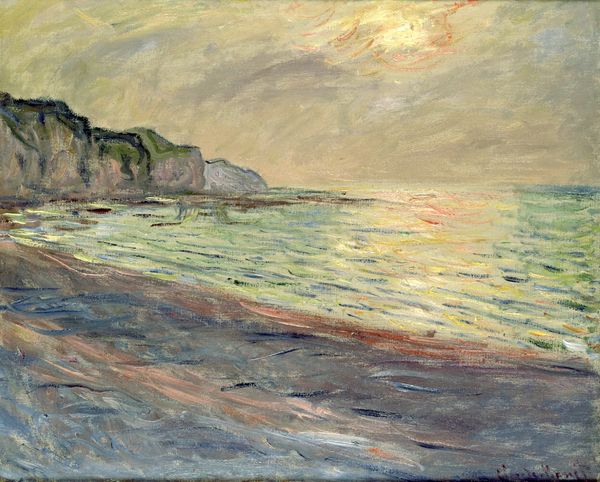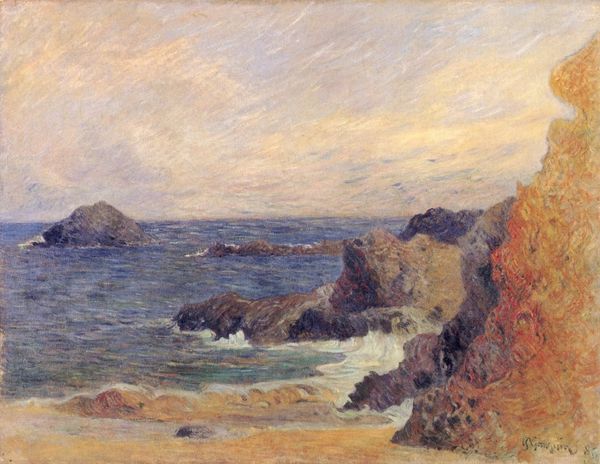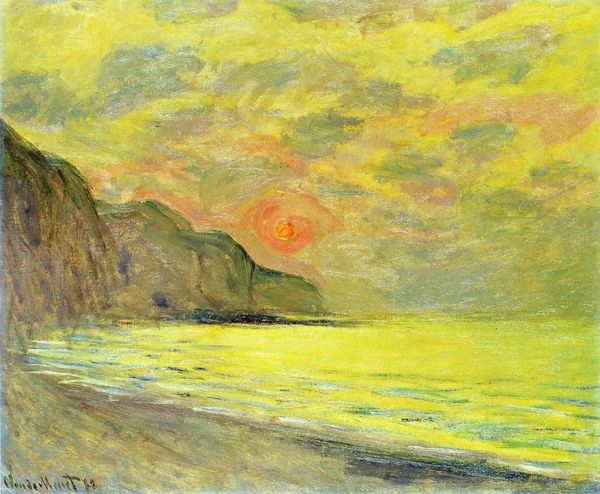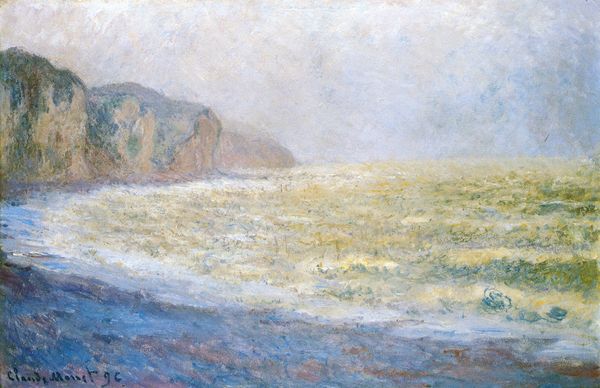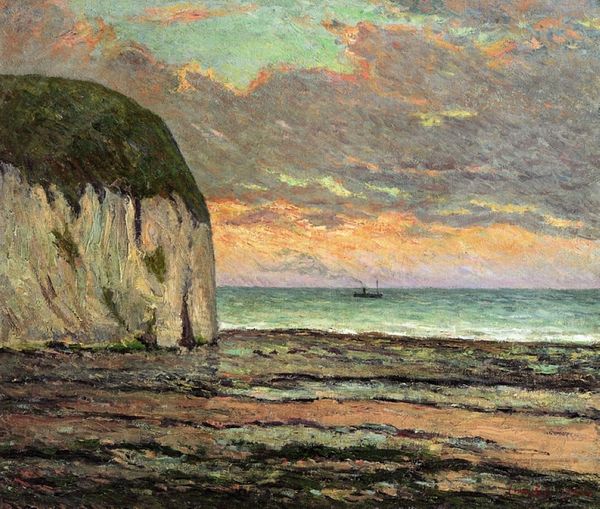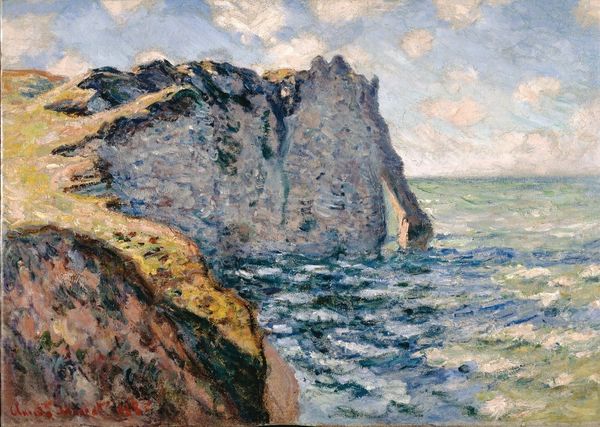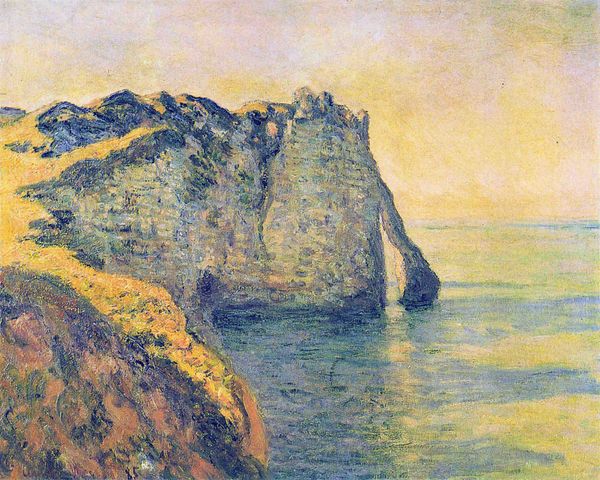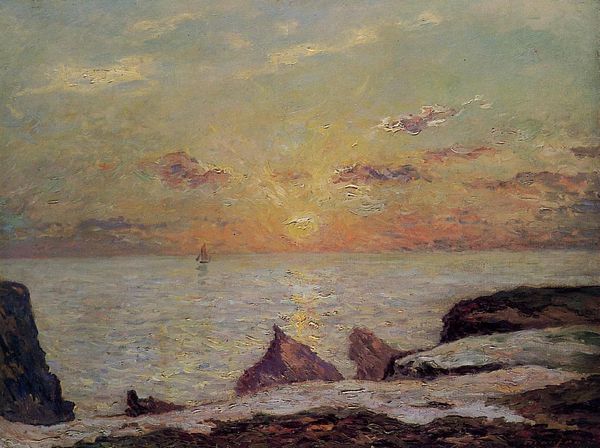
painting, plein-air, oil-paint
#
sky
#
cliff
#
painting
#
impressionism
#
plein-air
#
oil-paint
#
landscape
#
impressionist landscape
#
oil painting
#
rock
#
seascape
#
cityscape
#
watercolor
#
sea
Copyright: Public domain
Curator: Before us is Claude Monet's "Etretat, Cliff of d'Aval, Sunset," painted in 1885. The canvas captures a striking coastal scene in France, rendered in oil with that distinct Impressionist style. Editor: The colours! It’s all blazing warmth – those yellows, oranges, and touches of fiery red in the sky reflected in the sea. The cliff looms on the left, a stark silhouette against the setting sun, though it seems to be softening along with everything else. It really envelops you in the heat of the moment. Curator: Absolutely. Monet's work here showcases the principles of plein-air painting, moving outdoors to capture fleeting moments of natural light and atmosphere, emphasizing subjectivity. It’s the essence of Impressionism— the experience is valued above accuracy of depiction. Editor: It is interesting how Monet returned to the same locations repeatedly, portraying this same arch at different times of day. Looking at how Monet focuses on the changing qualities of light in "Etretat, Cliff of d'Aval, Sunset" through that feminist lens – it reminds me that, historically, artistic movements often sidelined female artists who engaged with similar innovative techniques, like Berthe Morisot, to depict fleeting impressions of domestic life. Curator: That is true. Though this was a very popular and well-established site of recreation in the nineteenth century. So even though these paintings focused on natural themes, in this period of expansion of leisure, the city becomes another landscape for modernity. Editor: It's such a seemingly tranquil scene, yet thinking of those tensions simmering beneath the surface gives me a different perspective on the constant push and pull in Monet's work between stability and transience, solid forms, and fleeting impressions. It is like we're seeing beauty coexisting with disruption. Curator: Indeed. "Etretat, Cliff of d'Aval, Sunset" offers a moment of pause, inviting viewers to contemplate both the inherent beauty of nature and the intricate relationships that constitute it. Editor: Yes, seeing the interplay between technique, context and cultural implications reveals how landscape painting reflects complex social concerns while encouraging critical thought.
Comments
No comments
Be the first to comment and join the conversation on the ultimate creative platform.

